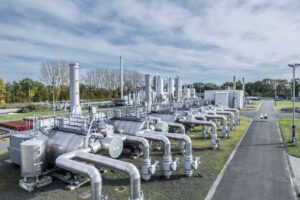Uniper has announced plans to develop a hydrogen storage capacity of up to 600 GWh by 2030.
 ‘Hydrogen is expected to play a key role in the energy transition, but in order to ensure reliable supply to the market, new storage is urgently needed. At Uniper we are investing in meeting that need, and today announce plans to develop salt caverns in north-west Germany for large volume hydrogen storage. The facilities will have an envisaged capacity of 250-600 GWh by 2030,’ says Uniper on LinkedIn.
‘Hydrogen is expected to play a key role in the energy transition, but in order to ensure reliable supply to the market, new storage is urgently needed. At Uniper we are investing in meeting that need, and today announce plans to develop salt caverns in north-west Germany for large volume hydrogen storage. The facilities will have an envisaged capacity of 250-600 GWh by 2030,’ says Uniper on LinkedIn.
The project will both investigate the possibility of converting existing underground facilities, as well as developing new facilities along the planned hydrogen core network.
With a total of more than 80 TWh of underground gas storage capacity for natural gas in Germany, Austria and the UK, Uniper is one of the largest energy storage operators in Europe.
In order to better forecast the demand for hydrogen storage capabilities as well as potential future projects, Uniper is also launching a comprehensive market consultation from today until the end of March 2024.














